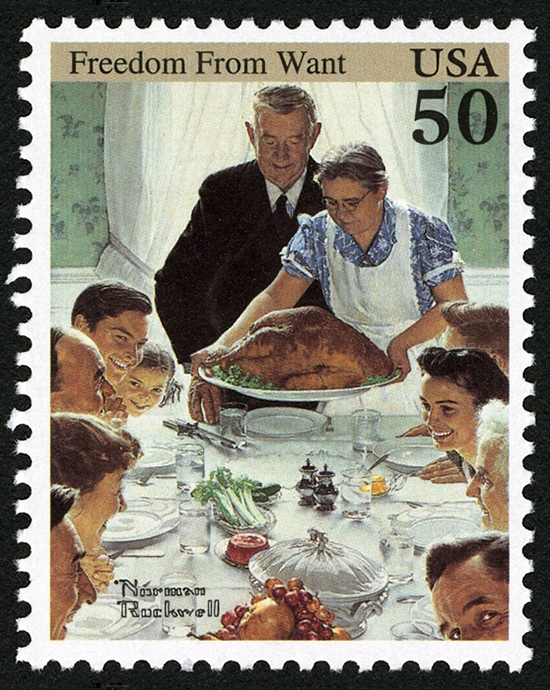
From the early colonial period to the present day, American artists have captured their interpretation of the American experience using different forms of art. These pieces of fine art have been adapted to portray famous American individuals, events and geography on postage stamps. It is unlikely that Grant Wood, the creator of “American Gothic,” ever intended for his famous image to appear on a postage stamp. However, Wood’s work along with hundreds of other paintings, photographs, busts and sculptures have been featured on American postage stamps. By highlighting American leaders, ordinary citizens, and locations, postage stamps depicting fine art have become another looking glass into this country and its many themes.
Designers of postage stamps face a unique challenge when working with American art. They use some of this nation’s greatest works to honor important American themes, but they only have a postage stamp sized space within which they can work. Consequently, some pieces have to be cropped, but not to such an extent where the meaning of the art is lost. Additionally, consumers respond better to brighter, bolder colors. Designers must keep this fact in mind when they manipulate art work for inclusion on stamps. Finally, some art, such as Jackson Pollack’s drip paintings, would be hard to discern in a space the size of a stamp. Ultimately, postage stamp designers are forced to not only choose carefully which artwork they depict, but also which aspects of those works they highlight. The process of using prominent works of American art to celebrate the Founding Fathers, common citizens and the geography of America on postage stamps remains one of the most fascinating chapters in the story of United States stamp design.
Created by Alexander T. Haimann, Collections Specialist, and Clifford R. Haimann, Research Intern, National Postal Museum.






